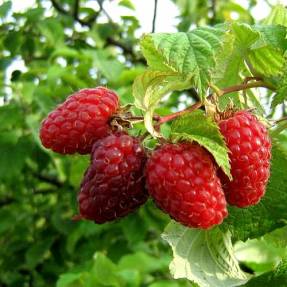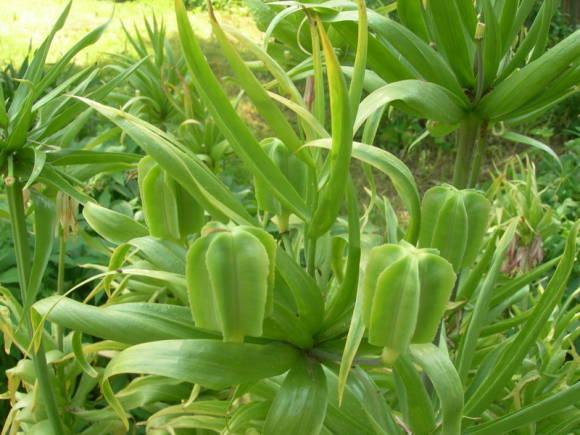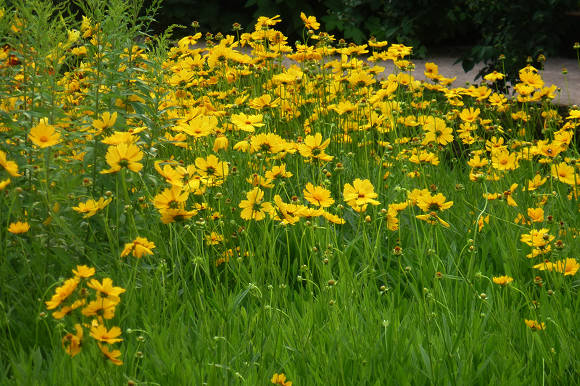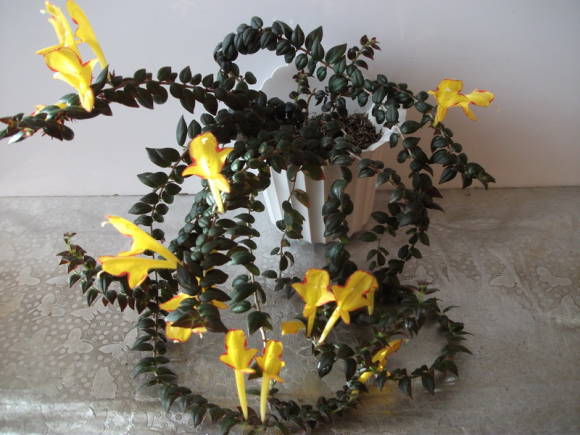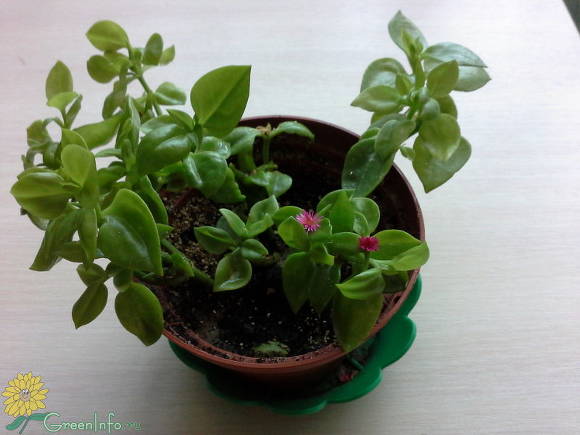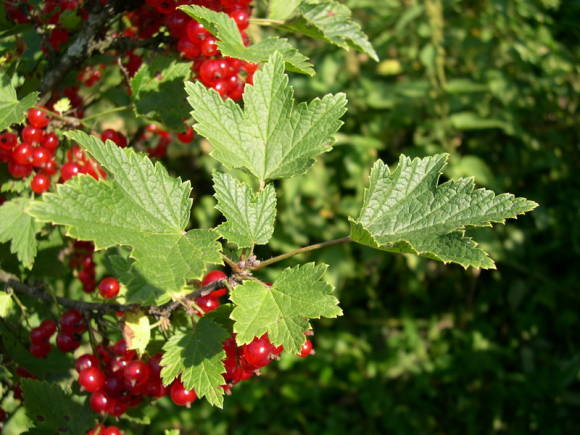They are not capricious at all
Saintpaulia is an unpretentious plant that does not require any special care. If you adhere to all of the following conditions of detention, then your violet is guaranteed to feel good and delight you with beautiful flowers.
About the variety of Saintpaulias - on the page Senprilia.

Temperature. The temperature of the ambient air and soil has a significant influence on the development of the plant. By changing the temperature regime, you can speed up or, conversely, slow down the process of plant development. Flowering in plants is delayed by low temperatures. At a temperature of about + 16 ° C, life processes in the plant are suppressed and flowering is postponed. At higher temperatures, plants bloom faster and fade faster. Therefore, when the buds begin to bloom, the plants are kept in cooler conditions.
The optimum air temperature for violets is from + 18 ° C to + 25 ° C. In such conditions, it blooms well and for a long time, and the flowers themselves stay on the plant for a long time.
If in winter the windows allow cold air to pass through, it is imperative to rearrange the plant to another, warmer place. You can make warm coasters on a cold windowsill for flowers. Place something so that the bottom of the pot does not touch the cold windowsill in order to avoid rotting the roots, which, in turn, can lead to the death of the plant.
Saintpaulias can be damaged when ventilating a room in winter if cold air gets on them. Under its influence, yellow ring spots appear on the leaves, the decorative effect of plants deteriorates.

Lighting. Like many tropical plants, uzambara violets like bright, diffused lighting, but without direct sunlight. If summer hot rays fall on the flower, then burns will appear on the leaves. The plant belongs to the light-loving, but along with this fact, it does not tolerate the scorching sun.
For violets, western and eastern windows are ideal. If you grow flowers on the south window, be sure to shade the plants. Violet needs a light flux of at least 10, and preferably 12 hours a day. The rest of the time she should be in peace and darkness.
When it is impossible to arrange the Saintpaulias under the conditions of the room so that they receive the proper amount of light, they need to organize artificial lighting. You can use fluorescent lamps - standard 36W. The lamp is suspended at a height of 20-25 cm from the plant. For better light diffusion, you can glue the wall with foil.
If you are seriously passionate about breeding Saintpaulias and grow them not only for yourself, but also for sale, then illuminated violet racks would be an excellent solution. The lamps are immediately mounted in the shelves on which the pots are placed. I use racks with a length of 1.2 m and a width of 0.6 m.On this width, 2 fluorescent lamps of 36 W each with a length of 1.2 m are attached.
The height between the shelves is 40-45 cm.For mini-violets, the shelf height can be lowered to 35 cm.
 |  |
Priming. I use a professional Klassman substrate, but you can't buy it in flower shops, it is sold in large bales of 20 liters. Previously I used Terra Vitta soil. I can recommend him for growing violets and other Gesnerievs. You can also prepare the mixture yourself. For this we use turf, humus, sand, sphagnum moss. The main requirements for the soil for Saintpaulias: it must be loose, quickly absorb water and allow air to pass through well.
The pot for Saintpaulia should be small, since the violet root does not take up much space, and the plant begins to bloom profusely only when the roots master the entire inner space of the pot.
For mini violets, the diameter of the pot is 5-7 cm, for standards, 8-9 cm is needed. That is, the diameter of the container should be three times less than the diameter of the rosette of leaves. And note that indoor violet prefers plastic over expensive clay pots.

About wick irrigation frankly
I want to tell you about wick irrigation. This method of keeping is very popular with collectors who have more than a dozen plants in their collection.
Wick irrigation is an irrigation method that uses the capillary properties of the cord, thanks to which the water from the container under the pot rises up the wick and releases moisture to the substrate.
First, we prepare, in fact, the wick itself. It should only be synthetic! Natural fiber will rot very quickly. It is very good to use a piece of any synthetic rope for wick watering. Often they use a strip of fabric cut from old tights, which can be seen in the photo.
 |  |
You can take any pot for setting violets on the wick. But I still recommend the plastic one. It is lighter and more practical. Personally, I use technical pots. The wick is passed through the drainage hole in the pot. Drainage during wick irrigation, as a rule, is not used.
Then, in the pot prepared in this way, we pour the soil mixture for the violets. The fact is that ordinary violet soil for wick irrigation is not entirely suitable, it is somewhat heavy. I use a mixture: high peat, perlite, coconut fiber.
 |  |
After that, we fill up the earth to the top. We plant a violet. The main thing is to plant the violet so that the growth point does not get wet! Water must be poured into the glass so that the bottom of the pot is not in water (at least 0.5 cm above the water). That's all! Now your task is to periodically pour water into the glass without leaving it empty.

Subtleties of reproduction
Rooting a leaf - This is the most common and fastest way to reproduce violets. You can propagate these plants at any time of the year, in winter it is better to create a backlight.
Usually, the leaves for propagation are taken from the lower or middle rows of the rosette. They must not be old and damaged.
Be sure to use a sharp blade to cut the sheet. We leave the stalk 1.5-2 cm. The shorter the stalk we leave, the faster it will give children! We make a cut at an angle of 45 degrees.
In violet growing, there is an opinion that the cut of the petiole should be dried. This will further protect it from rotting. I never dry the leaves, and everything takes root perfectly.
There are many ways to root leaves. In water, moss, peat tablets. It is I who plant only in peat mixture with the addition of perlite or moss.

I use 100-gram cups for rooting the leaves. I make several holes at the bottom with scissors so that there is no stagnation of water. Next, I sign the name of the variety, pour the soil mixture (it should be wet, but not wet), make a deepening and plant the leaf to a depth of 1 cm. I put all the cups with leaves in the greenhouse. This can be a transparent container, a zip bag, etc.
If you choose a method of rooting the cutting in water, then you need to choose such a container so that the cutting does not reach the bottom. In this case, we put the glass with a leaf in a bright and warm place. In winter, it is not recommended to use this method on the windowsill - the windowsill is cold and the roots will grow very slowly.

The first babies appear 1.5-2 months after planting. Some varieties require more time, it all depends on the characteristics of the variety.

To separate the children from the sheet, they must be at least 5 cm.

We put each baby in a separate glass and put it in a greenhouse for 2-3 weeks for better root growth

The second transplant should be in 3-4 months, in a pot with a diameter of 8-9 cm. In the future, an adult plant should be transplanted once a year.

And about feeding
You can start feeding a young plant 2-3 months after planting in a permanent pot. This should be done every two weeks at the most. Violet can not be "fed", this plant reacts poorly to excess fertilizing.
In order for the flower to develop actively, nitrogen fertilizers should be used, and in order to achieve abundant flowering, phosphorus-potassium fertilizers are used.
I will tell you what types of fertilizers are best for feeding violets.
- Etisso contains nitrogen, phosphorus and potassium in an easily digestible form, activates the growth and flowering of violets.
- Bona Forte also contains N, P and K in the required proportions. The dose is 10 ml per 1.5 liters of water. Violets can be fed with this fertilizer once every 15-17 days.
- Master - this fertilizer fully meets the needs of indoor plants for microelements. The drug is easy to use, and this fertilizer has no drawbacks.
Photo by the author Special issue of the newspaper "My favorite flowers" No. 4, 2018 "Blooming indoor plants"
